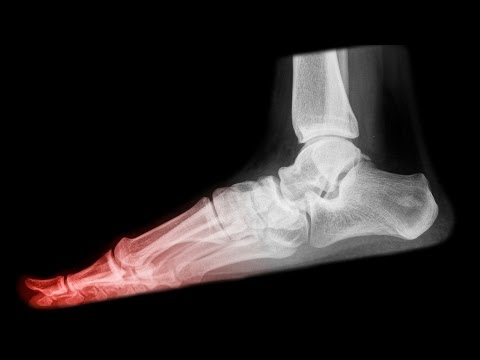A stress fracture is a tiny break to the bone caused by overuse. Once the muscles are no longer able to absorb the shock from normal activity, the bones take the brunt of the impact. Although normal daily use can lead to stress fractures, athletes are at a greater risk due to the repeated motions of their sports. Increasing the intensity of an activity too quickly can also result in a stress fracture. Stress fractures are treated by an orthopedic doctor who is educated in the bone structure of the body.
Most stress fractures affect the bones in the foot or lower leg where the weight is carried, particularly the second and third long bones that extend between the toes and the mid-foot. Sometimes they occur in the heel, top of the foot, on in an outer bone of the lower leg. It isn’t unusual for an orthopedic doctor to treat a runner for a stress fracture after they have spent a cold winter indoors before picking the sport back up without the needed conditioning. Another common cause is from wearing inappropriate footwear. Changing the surfaces on which the athlete performs when going from one sport to the next can also result in a stress fracture.
Some other conditions that occur to the feet can also increase the risk of developing a stress fracture. These include bunions and flat feet which are able to alter the person’s gait.

Symptoms of a Stress Fracture
• Pain that occurs gradually and is relieved with rest to the affected area
• Tenderness and swelling
• Bruising
Diagnosis
Because of their tiny size, stress fractures may not show up on a regular X-ray. CT or MRI scans may be used to detect the tiny break. The doctor should also take the person’s risk for developing stress fractures into mind when considering the diagnoses.
Which Athletes are Most Susceptible?
Of the number of athletes that seek orthopedic treatment for a stress fracture, those who participate in some sports are more common than others. Tennis, gymnastics, track and field, and basketball are the sports which put athletes at the greatest risk. Each requires the athlete to repeatedly strike the ground with their foot, putting more stress on the bones.
Female athletes also seem to be more susceptible to stress fractures than males. Orthopedic doctors attribute the difference to the triad of conditions known as the “female athlete triad” which includes eating disorders, amenorrhea and osteoporosis. Females’ bones decrease in mass as they age, resulting in a greater risk of incurring a fracture.
Prevention
Taking steps to prevent stress fractures is the best approach for keeping you healthy and active. When starting a new sports activity, start slow and build up in small increments. Use the proper equipment and consider cross-training to improve strength and flexibility. You should always follow a healthy, nutritious diet and be aware of any potential injuries. If any pain or swelling occurs, stop the activity and rest. If the symptoms persist, contact an orthopedic doctor to have the condition diagnosed.

